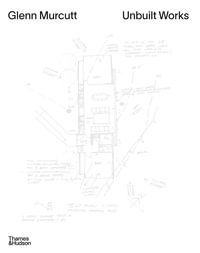| List of figures | p. ix |
| List of tables | p. xi |
| About the authors | p. xiii |
| Preface | p. xv |
| Acknowledgements | p. xvii |
| Communication concepts and contexts | p. 1 |
| Introduction | p. 3 |
| Defining communication | p. 3 |
| The importance of effective communication | p. 6 |
| The principles of effective communication | p. 10 |
| The role and importance of effective communication to the project manager | p. 12 |
| The aims, focus and structure of this book | p. 14 |
| Communication concepts and contexts | p. 15 |
| From individuals to corporations: communication types and techniques | p. 16 |
| Future directions for construction communication | p. 16 |
| Summary | p. 17 |
| Critical discussion questions | p. 18 |
| The challenges of communicating in the construction project environment | p. 19 |
| The nature of project-based working | p. 20 |
| The communication imperative for construction organisations | p. 25 |
| New communication challenges for the contemporary construction industry | p. 35 |
| Communication challenges for the construction project manager | p. 40 |
| Summary | p. 42 |
| Critical discussion questions | p. 42 |
| Case study: the importance of effective communication: the design and construction of the New Scottish Parliament in Edinburgh 1997-2004 | p. 43 |
| Theoretical perspectives on construction communication | p. 53 |
| The development and value of communication theory | p. 53 |
| Theoretical models of communication | p. 55 |
| Applying communication models to construction | p. 59 |
| Communication media | p. 64 |
| Barriers to effective communication | p. 69 |
| Summary | p. 71 |
| Critical discussion questions | p. 72 |
| From individuals to corporations: communication types and techniques | p. 73 |
| Interpersonal communication | p. 75 |
| Defining interpersonal communication | p. 75 |
| The nature of effective interpersonal communication within construction | p. 76 |
| The importance of effective interpersonal communication for construction project performance | p. 77 |
| Verbal interpersonal communication in construction | p. 79 |
| Non-verbal interpersonal communication in construction | p. 84 |
| The interplay of verbal and non-verbal forms of interpersonal communication | p. 86 |
| Summary | p. 89 |
| Critical discussion question | p. 89 |
| Case study: inter-professional communication | p. 90 |
| Group and team communication | p. 96 |
| Group development and team roles | p. 96 |
| Factors shaping the success of communication within construction project teams | p. 101 |
| Inter-group communication | p. 110 |
| Summary | p. 121 |
| Critical discussion questions | p. 122 |
| Case study: developing high performance teams: soft and hard communications initiatives at the Simons Group | p. 122 |
| Organisational communication | p. 128 |
| Introduction | p. 128 |
| The organisation as an arena for communication | p. 128 |
| Communication as a determinant of organisational structure | p. 131 |
| Understanding communication within organisations | p. 132 |
| The nature of communication within construction organisations | p. 137 |
| Managing communication within construction organisations | p. 142 |
| Developing an organisational communication strategy | p. 146 |
| Some caveats to improving communication within the temporary involvement climate of the construction project | p. 149 |
| Summary | p. 150 |
| Critical discussion questions | p. 151 |
| Case study: community relations at HBG Construction Ltd: internal and external communications | p. 151 |
| Corporate communication | p. 160 |
| Introduction | p. 160 |
| Defining corporate communication | p. 160 |
| Stakeholder theory | p. 161 |
| Principles of mass communication | p. 162 |
| Managing the corporate image of a construction organisation | p. 167 |
| Managing the corporate image of the construction industry | p. 174 |
| Communicating corporate and social responsibility | p. 177 |
| Summary | p. 179 |
| Critical discussion questions | p. 179 |
| Case study: corporate communication in relation to sensitive projects: the Yangtze Three Gorges Project | p. 180 |
| Future directions for construction communication | p. 189 |
| Information and communications technology | p. 191 |
| Introduction | p. 191 |
| The utilisation of ICT in the construction industry | p. 192 |
| Virtual working as a driver for ICT innovation | p. 193 |
| The evolution of ICT in construction | p. 194 |
| Some examples of ICT innovations in construction | p. 196 |
| Potential barriers to the uptake of ICT in construction | p. 201 |
| Explaining the industry's reluctance to embrace ICT: differential adoption | p. 205 |
| Realising the potential of ICT in the future | p. 206 |
| The limitations of ICT | p. 212 |
| Summary | p. 213 |
| Critical discussion questions | p. 214 |
| Case study: an innovative application of ICT in the construction process: the Stent Handheld Electronic Piling Assistant (SHERPA) | p. 214 |
| Conclusions and future directions in construction communication | p. 220 |
| Introduction | p. 220 |
| The construction communication context | p. 220 |
| Deconstructing the construction communication challenge for the project manager | p. 222 |
| Future construction communication challenges | p. 223 |
| The role of communication in enabling change | p. 227 |
| The construction project manager as an enabler of communication | p. 228 |
| Some future research directions | p. 229 |
| Summary | p. 230 |
| Critical discussion questions | p. 230 |
| References | p. 232 |
| Index | p. 251 |
| Table of Contents provided by Ingram. All Rights Reserved. |
























